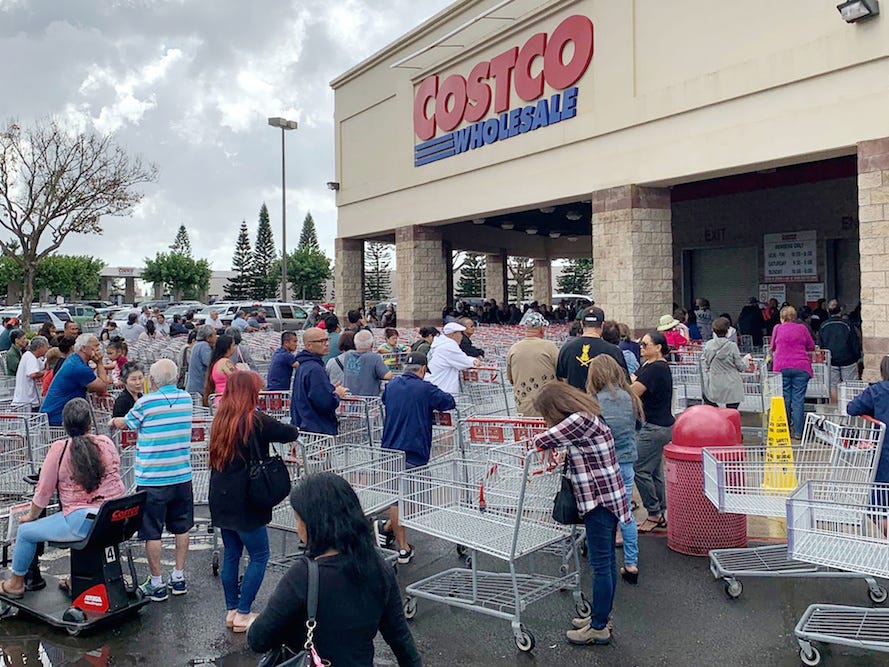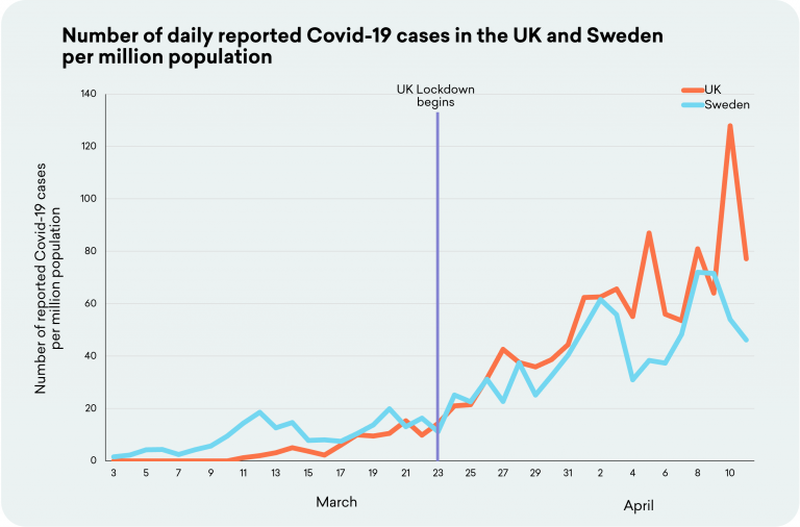
I surmised recently that far from slowing the infection rate for the coronavirus, this bizarre lockdown, which allows for visits to the grocery store, most likely increased the infection rate. The fact of reality is that people are transmitting the infection at the grocery store, and then they become more likely to spread it at home because they are locked in their homes with circulating air.
The theory that this system is making things worse is borne out by the data from Sweden, where they have not locked down, and yet have a lower rate of infection than Britain, which has used the “don’t go anywhere but the supermarket” model.
Of course, human beings are social creatures, and most are as afraid of being alone as they are afraid of death or anything else, so people are using the “grocery store loophole” as an excuse to be in public around other people.
This creates a situation where the grocery stores are “chronically overcrowded,” which again, leads one to believe that this lockdown is so much worse in terms of spreading the virus than if we’d done nothing.
Maryland has come up with a fittingly bizarre and unworkable solution to this problem.
The health department of Calvert County, Maryland, has asked residents to grocery shop only on certain days, based on their last names, to combat the spread of coronavirus.
“Chronic overcrowding” has become an issue in grocery and convenience stores, so residents are now asked to grocery shop no more than one every five days. Residents were asked to “voluntarily limit” their shopping to certain days based on their last names:
-Last name starting with A-C shop on dates ending with 0 and 5
-Last name starting with D-G shop on dates ending with 1 and 6
-Last name starting with H-L shop on dates ending with 2 and 7
-Last name starting with M-R shop on dates ending with 3 and 8
-Last name starting with S-Z shop on dates ending with 4 and 9“Going to the grocery store has shifted from an occasional trip to get necessities to a frequent excuse for getting out of the house,” the health department said.
Stores must limit their occupancy to five people per 1,000 square feet. Under that rule, the average American grocery store could accommodate about 205 people at once, according to food industry data.
The move is in line with efforts private companies like Walmart and Giant have made to honor social distancing rules put in place by the state, the health department said.
This isn’t going to fix anything, of course.
But then, it doesn’t matter, because all this is is the flu, and this lockdown may have doubled the infection rate and deaths, but that still doesn’t amount to very much, so it’s just whatever.
Remember that the “quarantine” (not actually a quarantine) where you are allowed to go to the grocery store was recommended by the World Health Organization, the Centers for Disease Control, and every other medical authority in the world. They had to have known that this would not reduce infections and would almost certainly lead to an increased infection rate.
You don’t have to be a medical expert to understand this. You don’t have to have data. It is simply intuitive.

